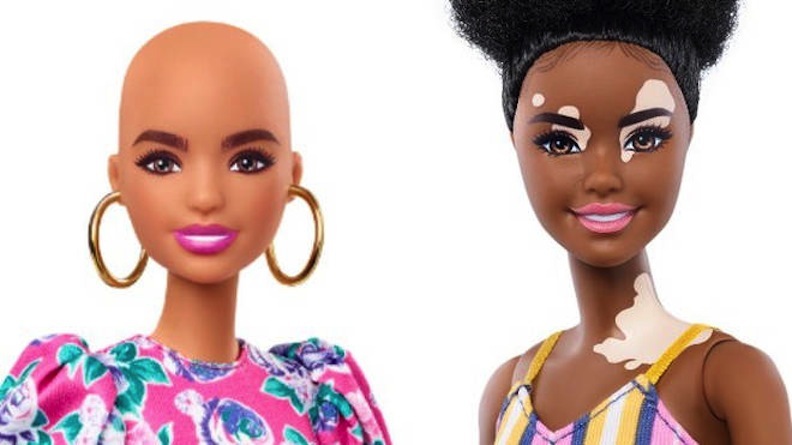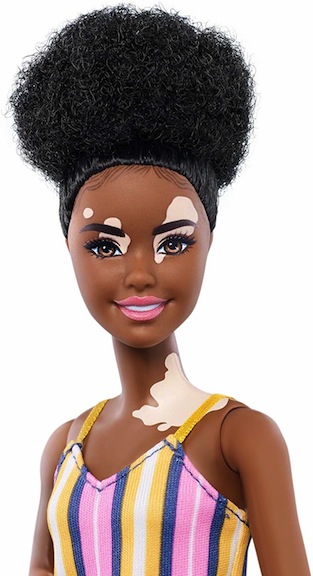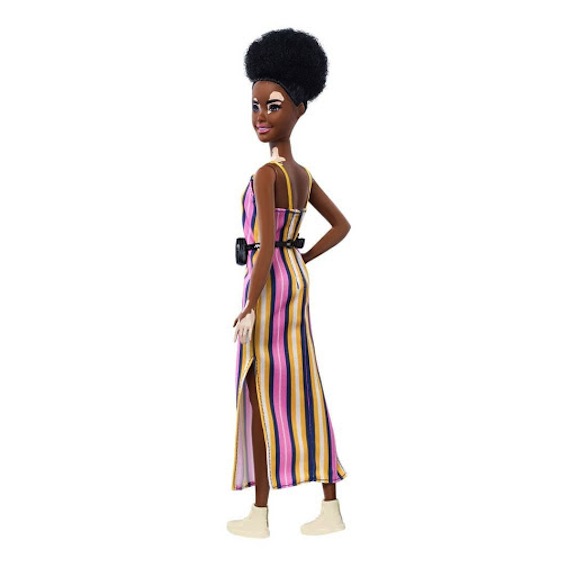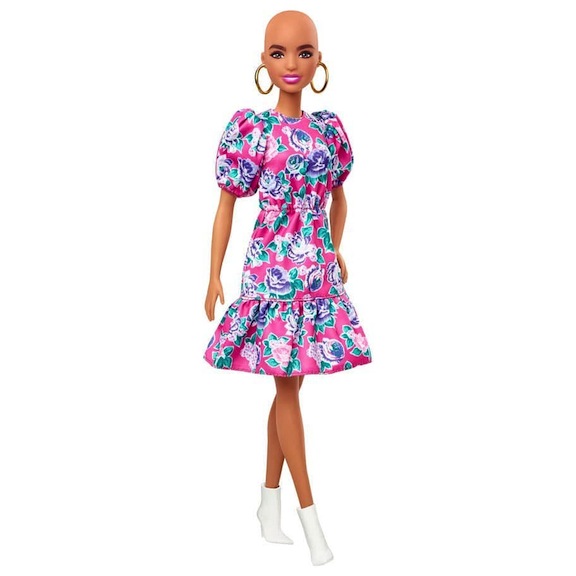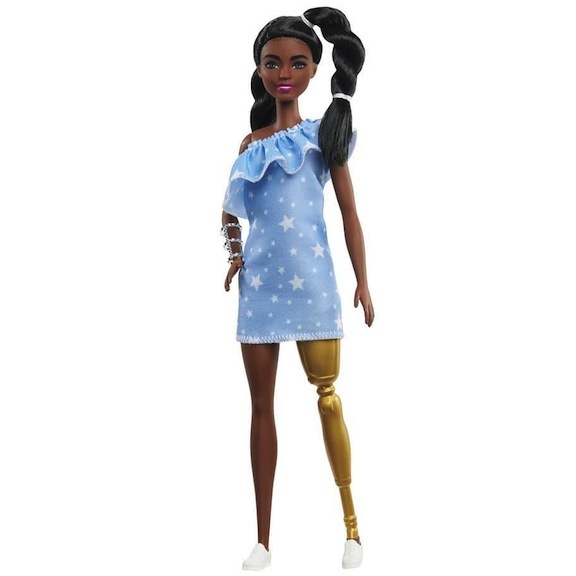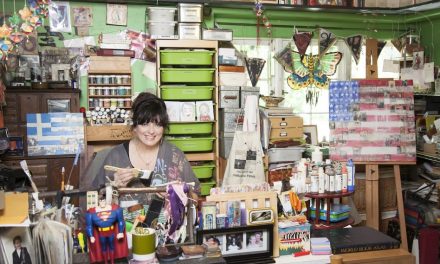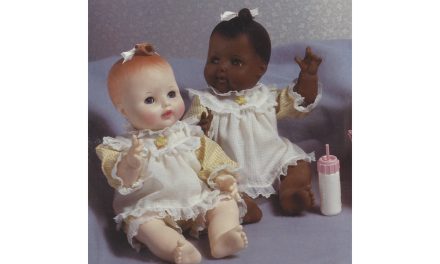Mattel makes many toys, but for most consumers, they are synonymous with Barbie. This connection has been both a blessing and a curse, and the toy giant is working to reconfigure and rebrand their line. Rather than banking on Barbie as the eternal girl next door, they have shrewdly examined who may be living next door in the real world when designing their Fashionista line. Their dedication to becoming more relevant and diverse is a direct response to acknowledging that most folks in any given neighborhood are not 6-foot-tall curvaceous blondes.
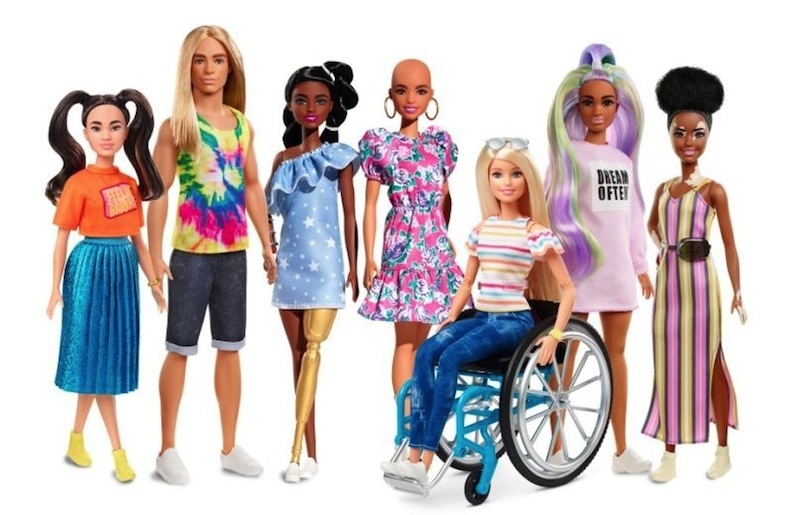
One of their solutions is to create dolls that are reflective of citizens who are often overlooked and underserved. Their Fashionista line is the repository for dolls that mirror what real-life people look like. In tandem with the array of hair colors and skin tones, Mattel has become the forerunner in manufacturing dolls that key into people living with physical differences, abilities, and challenges. The 2020 lineup of Fashionista Barbies has grown ever more inclusive, revisiting past models and unveiling new additions.
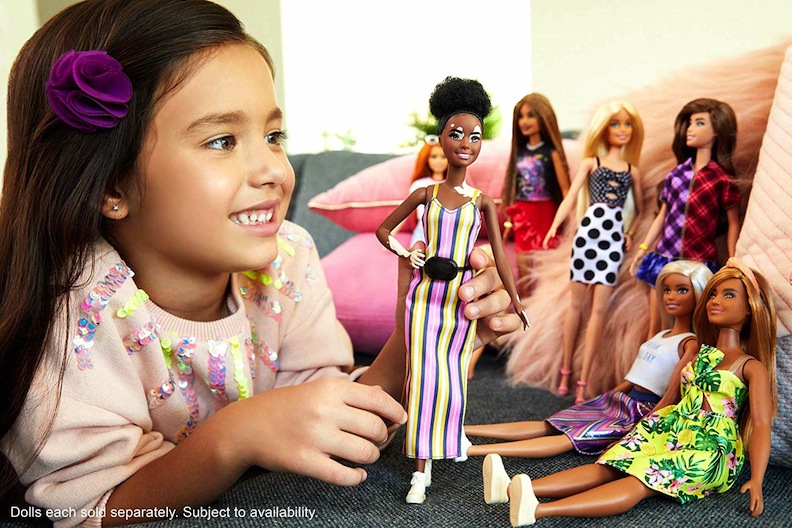
“We’ve been committed to increasing diversity in our line and showcasing all the different types of beauty that exist in the world, making it more accessible,” Lisa McKnight, senior vice president and global head of Barbie and Mattel dolls portfolio, told Doll Chronicles. “We are proud that Barbie is the most diverse doll line on the market that continues to evolve to better reflect the world girls see around them,” she remarked in her official statement.
The Fashionista line has reached an impressive tally: 176 dolls, 9 body types, 35 skin tones, and 94 hairstyles. The dolls that dare to be truly different are the ones that this week’s blog is saluting. (The other new 2020 unveilings will follow in the upcoming weeks!)
“Our commitment to better reflect the world drives a powerful conversation, and we know our efforts are resonating with eight consecutive quarters of growth and the Fashionistas category up double digits in 2019.” In a bold move, which would have been unthinkable 10 years ago, Mattel has created a Barbie with vitiligo.
Fans of Michael Jackson know that the singer claimed this was responsible for his skin lightening over the years, but many people doubted his explanation. (They maintain that he was paying to have his skin systematically bleached.) Vitiligo happens when the cells that produce pigmentation stop functioning or die. The loss of a person’s skin color can be a lifelong condition, and it cannot be cured. Treatment can help, but it cannot be eradicated. There are more than 200,000 cases of this skin condition in the United States per year. Loss of skin color can impact people of all races, but it is most noticeable for people with darker skin tones.
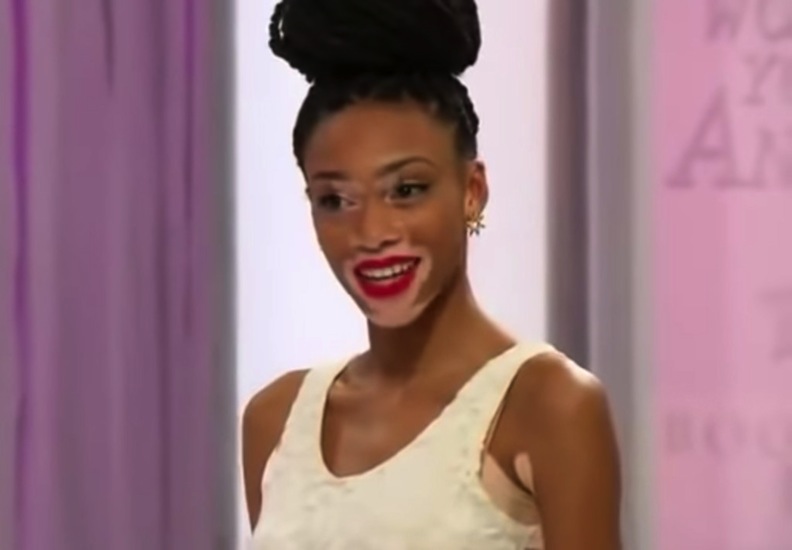
Model Winnie Harlow is a groundbreaking fashion icon because of her public persona and advocacy for people with vitiligo. The 25-year-old superstar burst onto the scene via Tyra Banks’ TV show “America’s Next Top Model.” She was the first Canadian to be cast on the program, and also the first with vitiligo. Though she didn’t win the 2014 competition, she did place sixth overall in the reality show. Since then, she has never stopped booking photo shoots and has graced innumerable magazine covers.

Right after her Top Model experience, the then-19-year-old gave a TEDx presentation, where she openly discussed her life with this condition. She was candid and honest about her daily life, and her interaction with people who were surprised and uncomfortable with her appearance. It was eye-opening. As a result of her participation, Harlow as presented with the Role Model award at the 2015 GQ magazine’s Men of the Year celebration.
“As we continue to redefine what it means to be a Barbie or look like a Barbie, offering a doll with vitiligo in our main doll line allows kids to play out even more stories they see in the world around them,” McKnight explained. “To design this doll, we worked with a dermatologist to ensure vitiligo was accurately represented.”
In addition to the doll with vitiligo, the Fashionista line is also debuting a doll that is bald. “If a girl is experiencing hair loss for any reason, she can see herself reflected in the line,” the Mattel spokesperson stressed.
This is particularly satisfying for me to see. Back in January 2012, I wrote a blog about Barbie Beating Cancer. At that time, an online pledge was being circulated requesting, and then demanding, that Mattel make a doll that embodied what many cancer survivors face. Even though the petition amassed more than 100,000 signatures, it didn’t seem like it would be a reality, or a reality anytime soon.
Now eight years later, the Barbie minus hair is available for purchase. It is not connected to cancer, per se, but rather to the different reasons why women do have hair loss. Interestingly, right around the time of this doll’s launch, Congresswoman Ayanna Pressley admitted that she has alopecia.
Representative Pressley had built a brand for herself around her braids and her thick dark hair entwined in Senegalese twists. She talked about how the young children in her congressional district would proudly wear T-shirts that proclaimed “my congresswoman wears braids.” How terrible, then, that her most recognizable feature disappeared due to her bout with this dermatological disorder.
Alopecia areata occurs when the body attacks its own hair follicles. More than 6 million people in the United States live with some form of alopecia. It is a condition that many people tend to hide, and donning a wig is the most simple solution. Representative Pressley was doing that, too, until she decided to tell the truth.
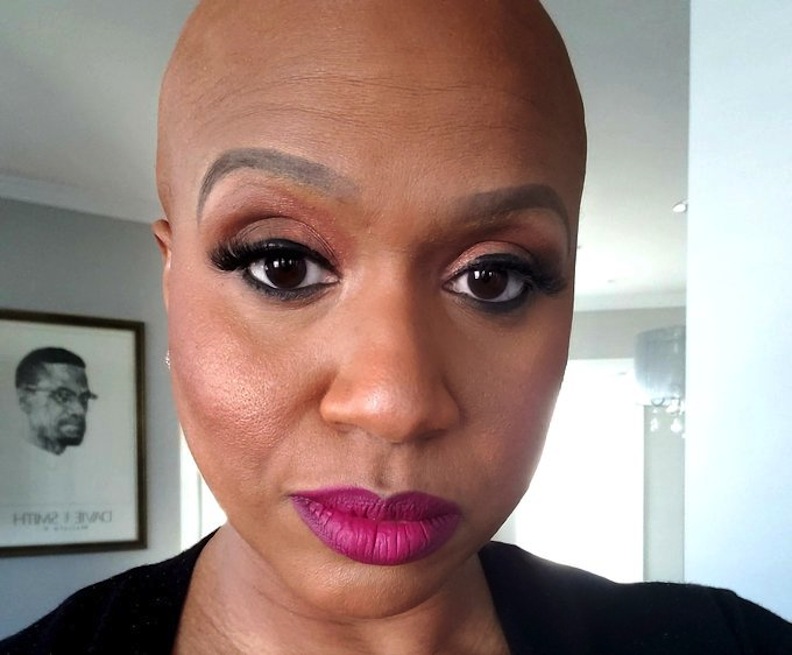
“Right now on this journey, when I feel the most unlike myself is when I am wearing a wig,” she said. After her decision to go public — or to “go clean” — she appeared on webcasts, news programs, made videos, and tweeted out photos of herself sans hair. Naturally, Twitter trolls climbed out of their basements to label her “Mr. Clean.” On February 6, the outspoken Democrat rebutted them by tweeting: “You really think I look like Mr. Clean? Please. He never looked THIS clean. Sorry my unapologetically rockin’ crown triggers you.”
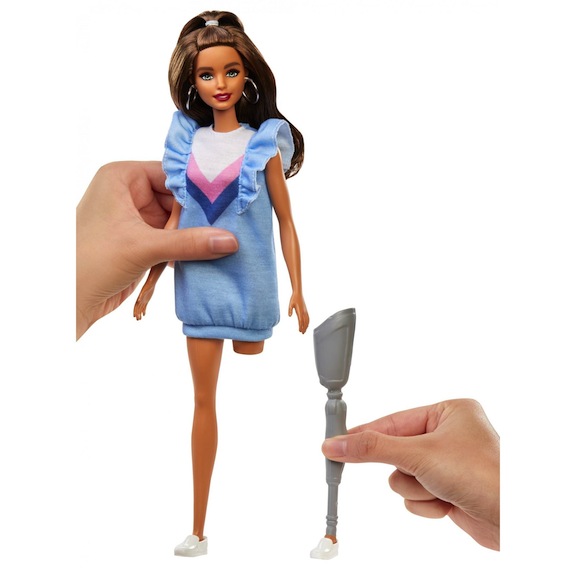
The Fashionista line of Barbies that featured different sizes, shapes, silhouettes, hair, and facial molds made a splash at Toy Fair 2016. I was there to cover it, and I was knocked out by the diversity. Since then, the plumper dolls, the shorter girls, the wider-hipped torsos, and the darker-skinned beauties have made room for attractive dolls that are differently abled. For 2020, the Barbie that has a wheelchair is now also available as an African-American, and the Fashionista that has a prosthetic leg is also now offered as a black young woman.
It’s quite fascinating to see how the racial diversity, physical abilities, and quirky personality distinctions are all showcased in the Fashionistas. In England, statistics say that 25% of all Barbies that are bought there are the wheelchair offerings. That’s a staggering bit of data. Additionally, the winds of change seem to be blowing across the world’s playrooms. Both American Girl (a Mattel subsidiary) and Lottie Dolls have made worthwhile advances in recognizing segments of the population that have frequently been forgotten.

After last year’s birthday bashes, Barbie has now reconciled herself with being 61 years old. Perhaps now in her golden years, the golden girl will continue to explore alternatives to being a long-legged, slim-waisted, large-bosomed California dream girl. Barbie’s mom, toy innovator Ruth Handler, was very vocal about her bout with breast cancer, which resulted in her double mastectomy. Handler opined at that time: “When I conceived Barbie, I believe it was important for little girls’ self-esteem to play with a doll that had breasts. Now I find it even more important to return that self-esteem to women who have lost theirs.” Handler went on to found a company called Ruthton, which manufactured breast prostheses. She named her breast prosthesis “Nearly Me” and fitted First Lady Betty Ford with one.
Perhaps that will be Barbie’s next incarnation. As the doll line becomes more diverse, more realistic, and more reflective of the humans who surround us, perhaps it will show that Barbie can do anything and can be anything. And, most important, she can beat anything. We will see if the Barbie who has survived cancer, and contains the scars to show it, will join the rank of her fellow sister dolls.

